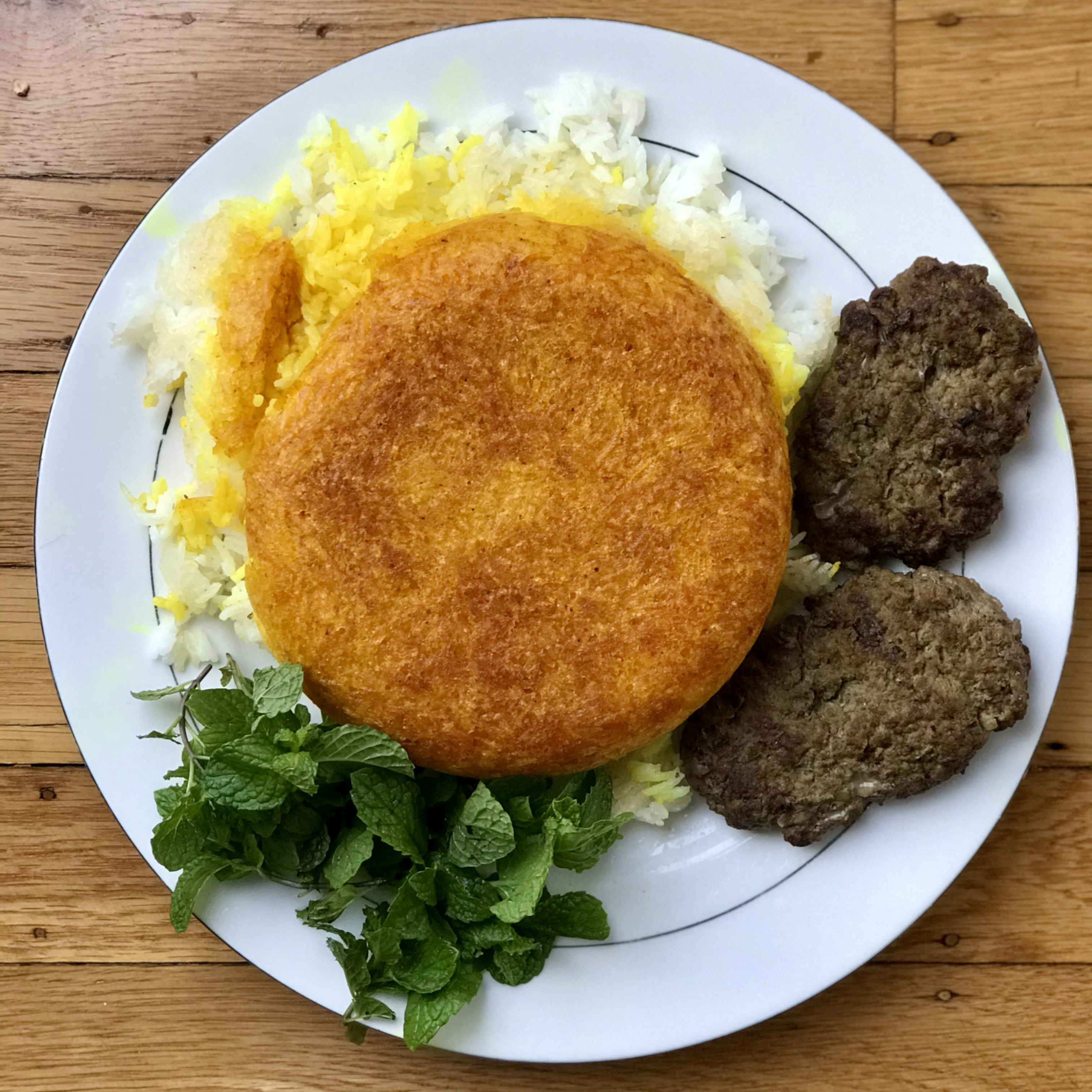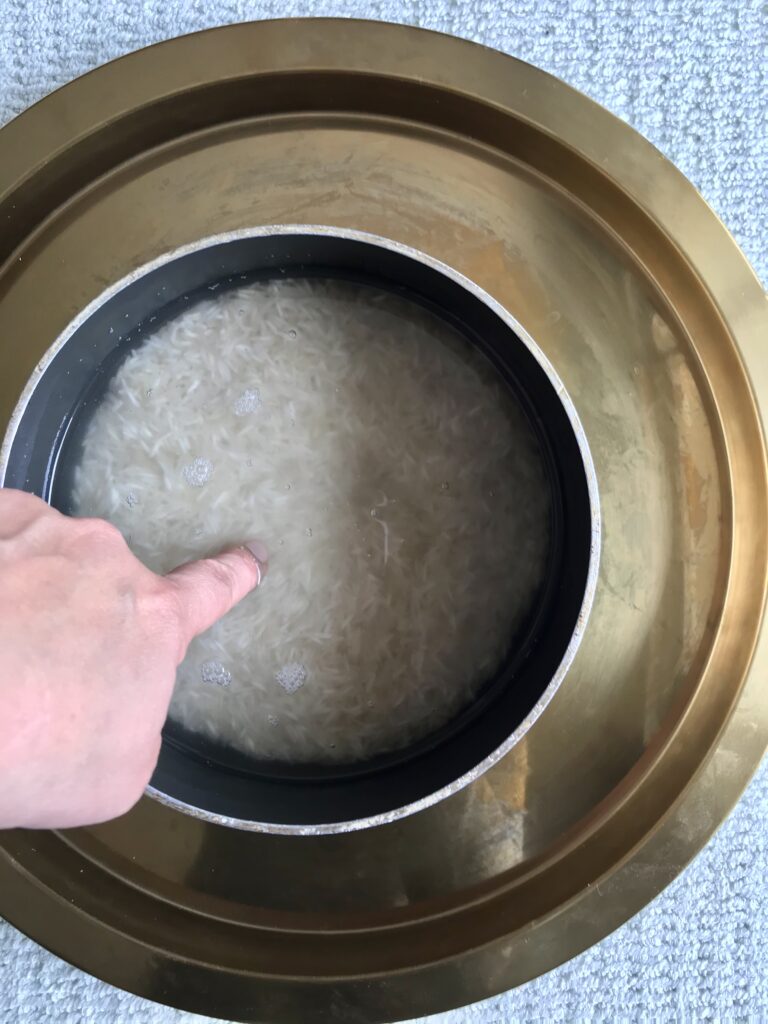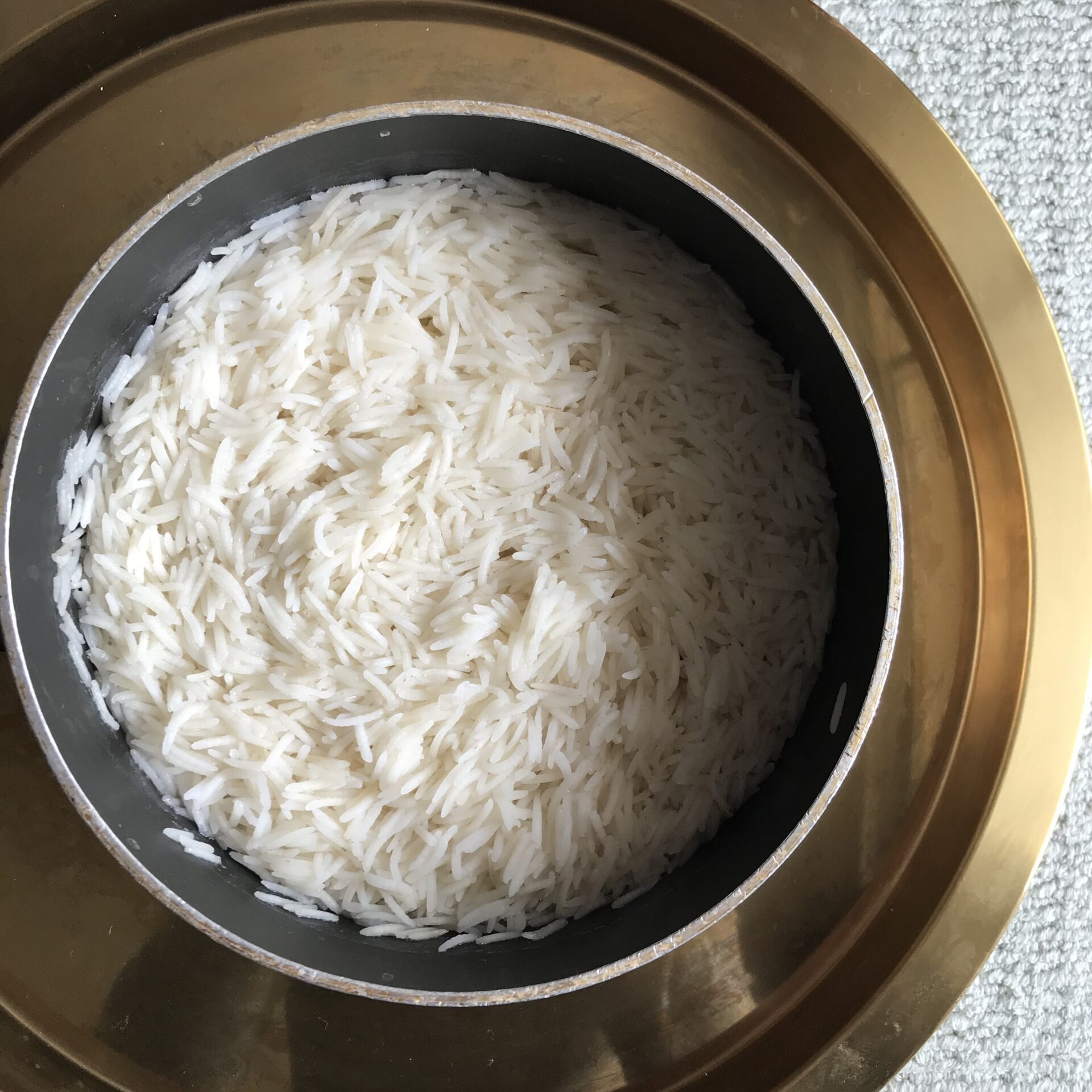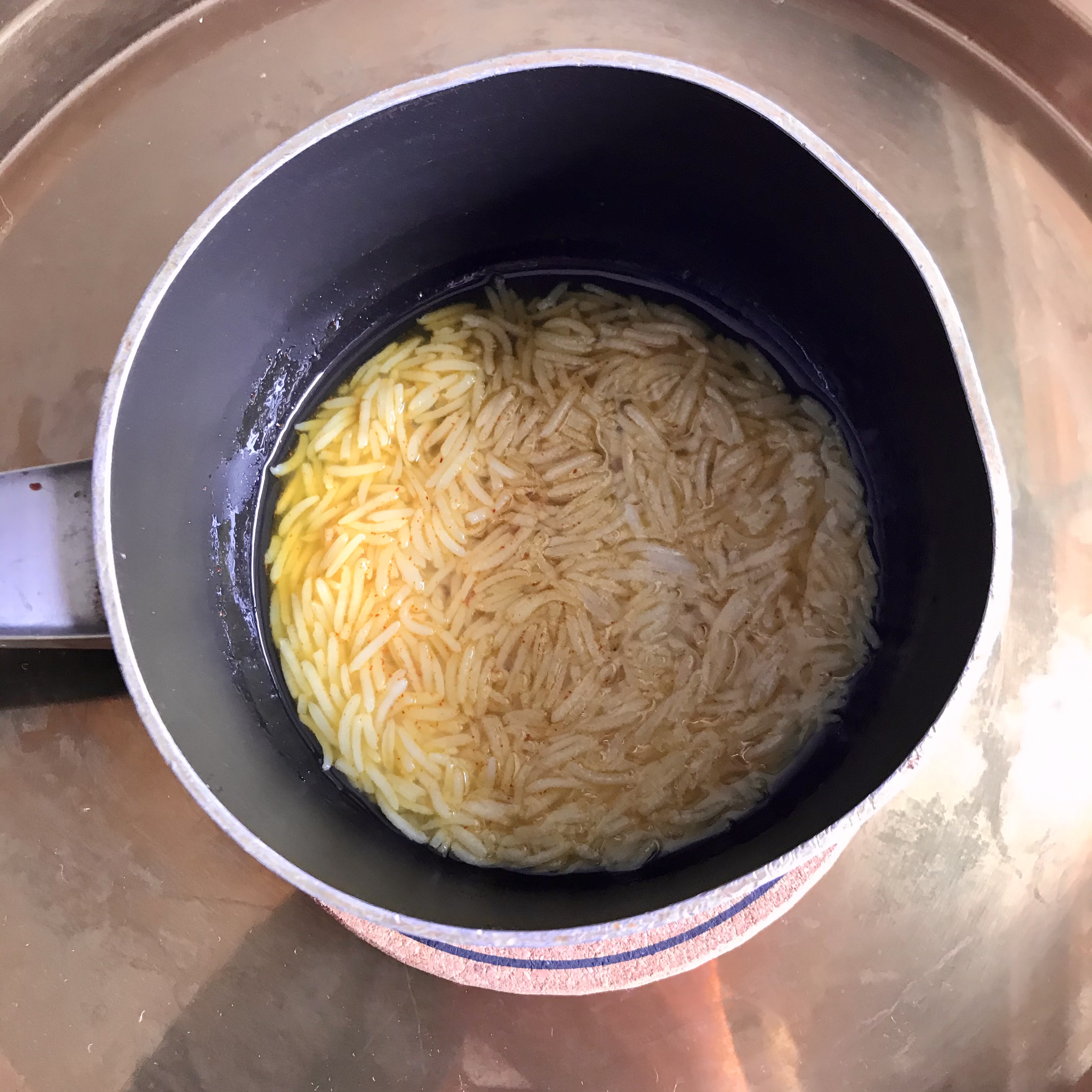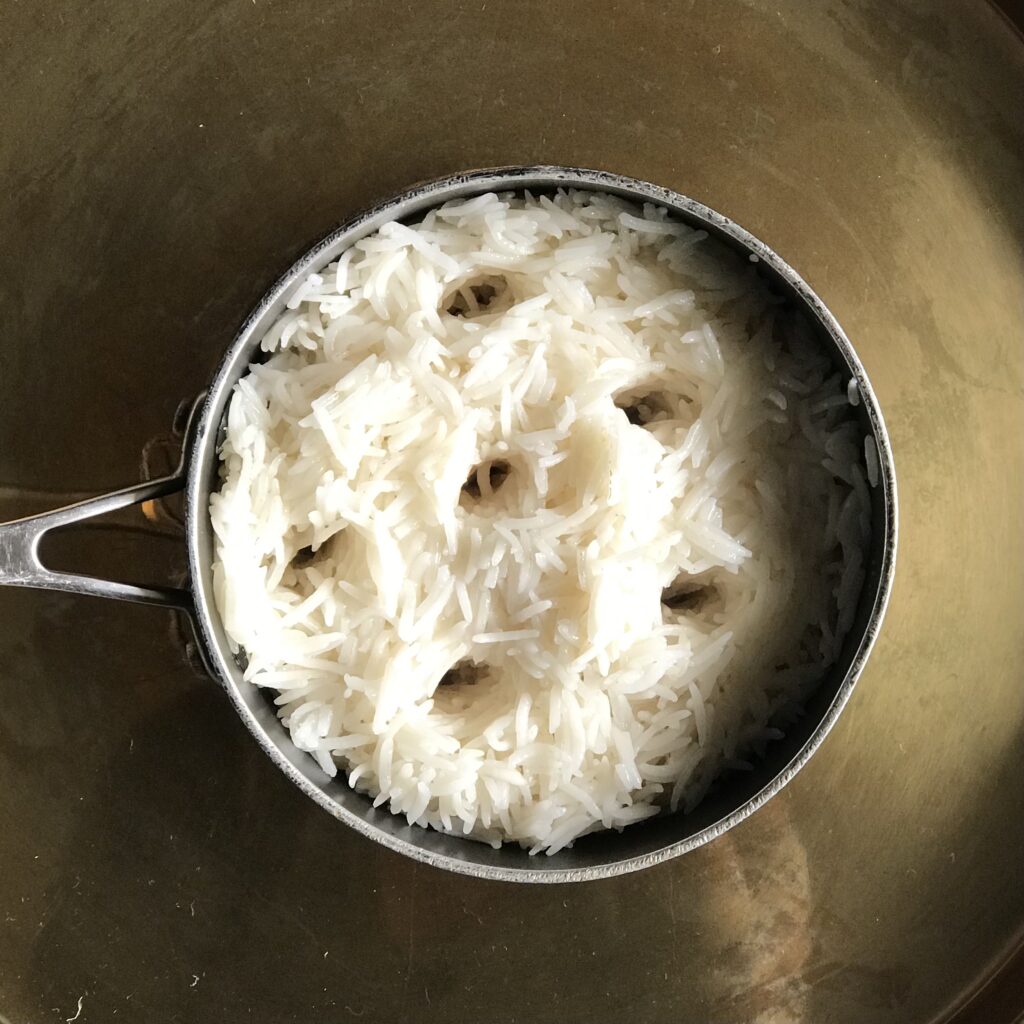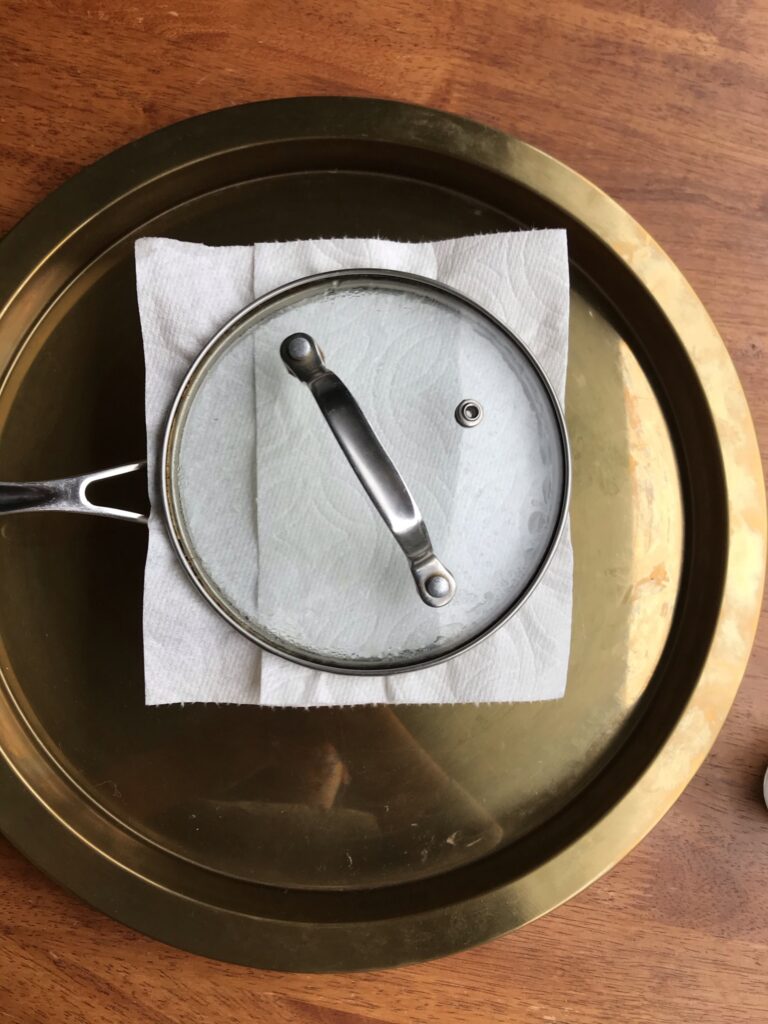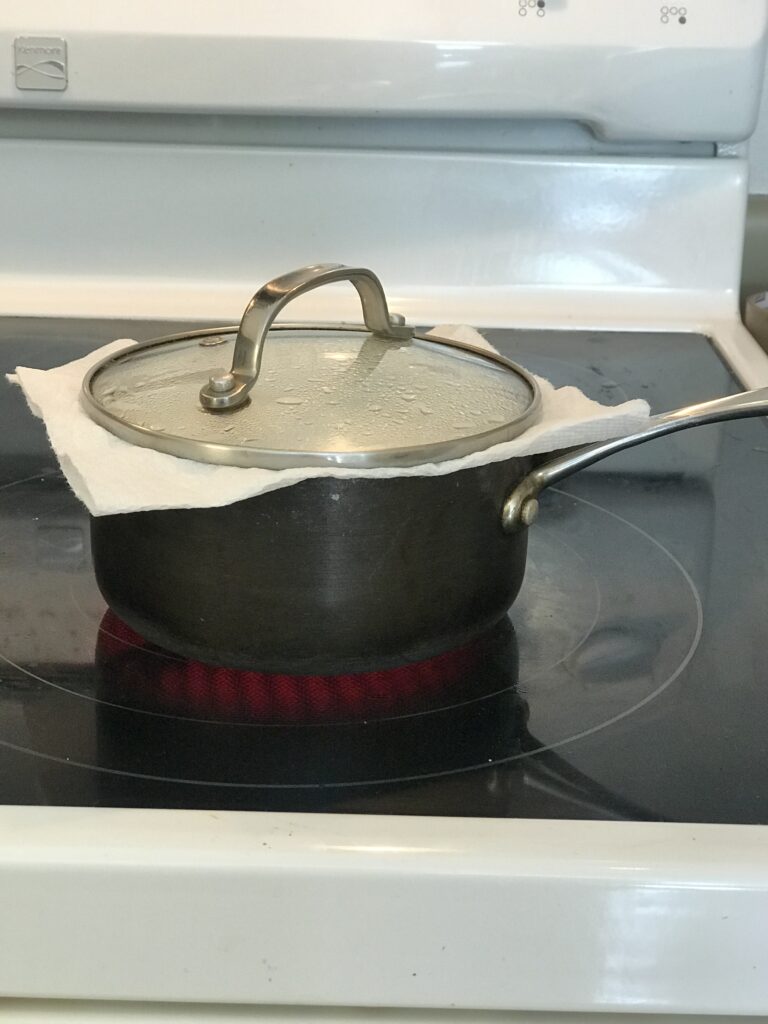Kateh Persian Rice with Tahdig
Let me tell you about Tahdig. It is the crunchy and crispy rice from the bottom of the pot. It’s one of the most coveted parts of Persian cuisine. Typically made with bloomed saffron and rice, but equally delicious made with thin slices of caramelized potatoes or golden and toasty lavash bread.
I made rice simply and more rustic that traditional recipes. The way I make it is called Kateh (or Katte), and it’s essentially the lazy person’s method of making rice. But I make a killer tahdig with it, so it balances out. And Katte rice actually tastes better than strained rice so I think it’s a win-win in my book.
My recipe may be annoying to people who need exact measurements. Over time you will become an expert at making rice and the acclaimed tahdig, so don’t be discouraged if your first attempt is not stellar. More likely than not, it will still all be super delicious and if anything it will motivate you to try again. Don’t be scared. It’s not the right way to approach making rice and tahdig.
Katte and Persian white rice is typically paired with a rich khoresh stew full of braised vegetables and meats if you choose. Or with skewers of grilled kababs and tomatoes. However you choose to serve your katte, be proud that you’ve made Persian style rice and enjoy the fruits of your labor.
Start off with good quality basmati rice. Persian, Afghan, or Indian long grain rice is the best choice. A non-stick pot with tight fitting lid is helpful. Measure 2-ish cups of rice into the pot and wash/rinse until the water runs clear, at least 3-4 times.
Add enough cold water to the pot that it covers the rice by more than 1 inch. It will be about 3 cups. Add 1 teaspoon of table salt and 1 tablespoon of neutral oil. Avoid any oil with a strong taste like good quality olive oil etc as it will flavor the rice. Bring to a rapid boil over high heat, then lower to medium low and cook until almost all of the water is absorbed, stirring occasionally. All uncovered.
Keep in mind that the rice can be delicate. Take care when washing the rice that the pressure of the water doesn’t break the grains of rice. And stir gently when cooking for the same reason. Persian rice is esteemed for the long grains of separated rice so take the time to be gentle.
Once the water is mostly absorbed, check that the rice is about 1/2 cooked. It should be al-dente at this point. Still slightly hard at the very center of grains of rice. If it’s still too hard add about 1/2 cup more water and continue to cook.
Transfer the rice to a big bowl temporarily so you can make a special tahdig. Note – you can totally skip the “special” part and continue cooking the rice as described below and the tahdig will still be delicious, it just won’t have the extra embellishments like saffron, or potato, or bread, that makes it extra special.
In the bottom of the pot, add a few tablespoon of bloomed saffron in water. To bloom saffron, grind 10ish threads of saffron into a powder either in a designated coffee grinder or mortal and pestle (or use the back of the spoon on a small plate) and add to a few tablespoons of hot water. Avoid using boiling water so you don’t burn the saffron. Allow to bloom for a few minutes before using. Keep in mind saffron stains badly so use caution when using.
To cut a step (and dish to wash!) I typically just add the ground saffron to the bottom of the pot and add the hot water directly on top, and swirl around gently. After a few minutes you are good to go. Add a few tablespoons of oil into the pot with the saffron and water, along with a few heaping tablespoons of the par-cooked rice. Mix together gently then spread evenly to cover the bottom of the pot.
You can experiment with using thin slices of potato or flat bread for your tahdig as well. For potato, layer 1/4 to 1/8th inch slices along the bottom of the pot with the water and oil mixture. Saffron is optional. For the bread version, use thin lavash or a regular tortilla, and use more oil that the regular tahdig. No water is necessary with the bread version and note that the bread version has a greater chance of burning so be prepared to have a few mishaps before you get the hang of that one.
Carefully spoon in the rest of the rice on top, paying attention not to disrupt the bottom layer. Using the handle of a mixing spoon or spatula, push down through the rice making vertical tunnels which will allow the steam to escape during cooking. I like to make about 5 vent tunnels.
Cook the rice on medium-high heat for about 5 minutes then reduce heat to low. Cook for about 15-20 minutes until steam accumulates under the lid. Then put 1-2 layers of paper towel between the lid and pot so excess steam will be absorbed and the crunchy tahdig can be formed. Instead of paper towels you can also use a thin dish towel or a specific lid “bonnet” called a damkoni. Careful to limit any overhang from the towels to avoid it catching fire.
Continue to cook like this for another 20 minutes or so. You can carefully check that the rice is cooked by pressing a few grains in between your fingers – there should be no hard parts. I like to carefully shake the pot from side to side to see if the tahdig is formed. If I hear it moving around as one solid piece there is a good chance it is done. You can also use the old school way of putting a bit of your saliva on your finger and tapping it to the side of the pot about 1/2 way up. If it sizzles, then the rice is known to be ready. Doesn’t always for work for everyone so use at your own discretion.
When you think the rice is ready – you are ready to serve it! You can either flip the rice out onto a platter and have an impressive “cake” of rice, or you can spoon it out on a platter and then carefully take the tahdig out to serve around the rice or on a septette platter.
To flip the rice, use a flat serving platter larger than your pot, invert it on the opening and very carefully flip the pot while holding the platter securely and put down on a surface. Slowly lift the pot up vertically to expose the rice and hopefully a nice golden tahdig on top.
You should lift the tahdig layer for a few seconds with a flat spatula to allow excess steam to escape and let the tahdig stay crunchy.
Persian white rice is typically paired with a rich khoresh stew full of braised vegetables and meats if you choose. Or with skewers of grilled kababs and tomatoes. However you choose to serve your kateh, be proud that you’ve made Persian style rice and enjoy the fruits of your labor.
Kateh Persian Rice with Tahdig
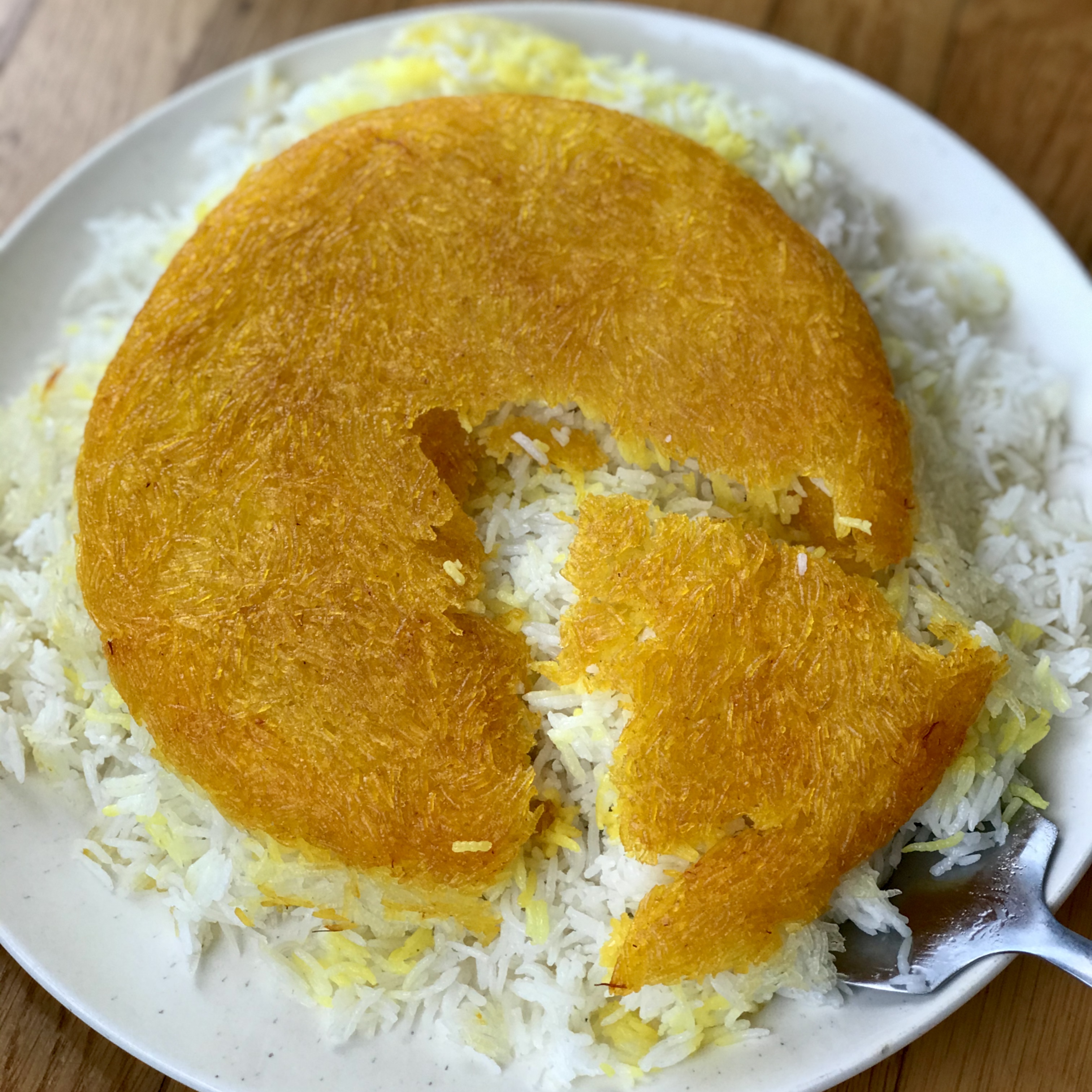
This simplified Persian Rice recipe with Tahdig is an alternative to the traditional method of soaking and and parboiling the rice. It is fluffy and delcious and produces a showstopper tahdig crispy rice crust. Pair with a hearty stew or kabab skewers for a delcious Persian meal.
Ingredients
- 2 cups white basmati rice, rinsed until water runs clear
- 3 Tablespoon neutral oil, seperated
- 1 teaspoon table salt
- 2 Tablespoons of bloomed saffron in hot water (optional)
Instructions
- Add the rinsed rice, 1 tablespoon oil, salt, and water to a small pot with a tight fitting lid. The water should cover the rice by about 1 inch.
- Bring to a rapid boil over high heat, then lower to medium low and cook until almost all of the water is absorbed, stirring occasionally, uncovered.
- Once the water is mostly absorbed, check that the rice is about 1/2 cooked. It should be al-dente at this point. Still slightly hard at the very center of grains of rice. If it’s still too hard add about 1/2 cup more water and continue to cook.
- Transfer the rice to a big bowl temporarily so you can make a special tahdig crispy rice crust.
- In the bottom of the empty pot, add the bloomed saffron with water. Add 2 tablespoons oil, and 2-3 tablespoons of the par cooked rice. Mix together gently then spread evenly to cover the bottom of the pot.
- Carefully spoon in the rest of the rice on top, paying attention not to disrupt the bottom layer. Using the handle of a mixing spoon or spatula, push down through the rice making vertical tunnels which will allow the steam to escape during cooking. Make about 4-5 vent tunnels.
- Cover with the lid, and cook the rice on medium-high heat for about 5 minutes then reduce heat to low. Cook for about 15-20 minutes until steam accumulates under the lid.
- Then put 1-2 layers of paper towel between the lid and pot so excess steam will be absorbed and the crunchy tahdig can be formed. Instead of paper towels you can also use a thin dish towel or a specific lid “bonnet” called a damkoni. Careful to limit any overhang from the towels to avoid it catching fire.
- Continue to cook like this for another 20 minutes or so. You can carefully check that the rice is cooked by pressing a few grains in between your fingers - there should be no hard parts.
- When the rice is ready - you are ready to serve it! To flip the rice, use a flat serving platter larger than your pot, invert it on the opening and very carefully flip the pot while holding the platter securely and put down on a surface. Slowly lift the pot up vertically to expose the rice and hopefully a nice golden tahdig on top.
- Lift the tahdig layer for a few seconds with a flat spatula to allow excess steam to escape and let the tahdig stay crunchy.
Notes
- Keep in mind that the rice can be delicate. Take care when washing the rice that the pressure of the water doesn’t break the grains of rice. And stir gently when cooking for the same reason. Persian rice is esteemed for the long grains of separated rice so take the time to be gentle.
- You can skip transfering the rice for the tahdig and continue cooking the rice as described above. The tahdig will still be delicious, it just won’t have the extra embellishments like saffron, or potato, or bread, that makes it extra special.
- To bloom saffron, grind 10ish threads of saffron into a powder either in a designated coffee grinder or mortal and pestle (or use the back of the spoon on a small plate) and add to a few tablespoons of hot water. Avoid using boiling water so you don’t burn the saffron. Allow to bloom for a few minutes before using. Keep in mind saffron stains badly so use carefully.
- You can experiment with using thin slices of potato or flat bread for your tahdig as well. For potato, layer 1/4 to 1/8th inch slices along the bottom of the pot with the water and oil mixture. Saffron is optional. For the bread version, use thin lavash or a regular tortilla, and use more oil that the regular tahdig. No water is necessary with the bread version and note that the bread version has a greater chance of burning so be prepared to have a few mishaps before you get the hang of that one.
- I like to carefully shake the pot from side to side to see if the tahdig is formed. If I hear it moving around as one solid piece there is a good chance it is done. You can also use the old school way of putting a bit of your saliva on your finger and tapping it to the side of the pot about 1/2 way up. If it sizzles, then the rice is known to be ready. Doesn’t always work for everyone so use at your own discretion.
- You can either flip the rice out onto a platter and have an impressive “cake” of rice, or you can spoon it out on a platter and then carefully take the tahdig out to serve around the rice or on a separate platter.
- Persian white rice is typically paired with a rich khoresh stew full of braised vegetables and meats if you choose. Or with skewers of grilled kababs and tomatoes. However you choose to serve your katte, be proud that you’ve made Persian style rice and enjoy the fruits of your labor.
Kateh can also be spelled Katte.
